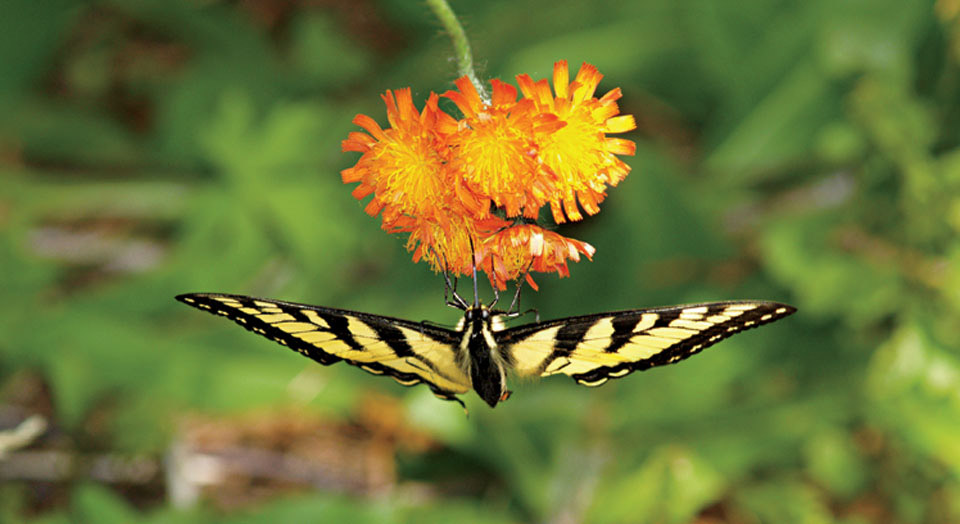First Do No Harm
 Insects and weeds
overrunning your garden might make you want to grab pesticides and start spraying, but for the health and safety of living creatures and the environment, it’s best to keep your hand off the nozzle.
Insects and weeds
overrunning your garden might make you want to grab pesticides and start spraying, but for the health and safety of living creatures and the environment, it’s best to keep your hand off the nozzle.
“Researchers are learning more every year about the health effects of synthetic herbicides and pesticides, but there are still many holes in our knowledge,” says California master gardener Katherine Hunting.
We do know that washed downstream, chemical-infused runoff from crops, golf courses, lawns and gardens can harm wildlife, says Ya-Wei Li, Defenders’ director of endangered species conservation. These toxins are easily absorbed through the permeable skin of frogs and other aquatic life, and their decline can cause a ripple effect, reducing the population of predators that rely on them for food. U.S. Geological Survey statistics reveal that more than 90 percent of all U.S. waterways in urban and agricultural areas now contain pesticides.
But the problem isn’t just in the water. On a basic level, when the number of insects is reduced, the amount of food for prey species, such as songbirds, is also diminished. Insecticides also kill all “bugs” not just the ones that annoy you. “There’s often no distinction between target and nontarget species,” says Li. “While a chemical may rid you of the offending ‘pest,’ it can also hurt beneficial insects.”
A newer class of insecticides known as neonicotinoids is hitting pollinating insects hard. While there’s been fanfare about “neonics” affecting our food crops, they’re also present in garden products and cause equal harm. From all angles, these toxic chemicals are killing the pollinators essential to plants grown on farms and in gardens. In fact, two-thirds of the food crops humans rely on require insect pollination.
The herbicide glyphosate—commonly called Roundup—is one tool used to remove milkweed, the only food source for monarch caterpillars. Today glyphosate is the most used herbicide in the country—the first choice of farmers and the second-most applied herbicide in gardens.
But easy alternatives to these harmful chemicals abound. Various websites offer effective, natural and homemade remedies, such as pouring vinegar or boiling water on weeds. Using a garlic and pepper spray on vulnerable plants or applying strong scents like Irish Spring soap to wooden stakes throughout the garden can deter pests, including deer.
Certain plant species naturally dissuade pests. Pair them with pest-susceptible plants as a means of prevention. Placing rows of fine mesh netting over garden beds can keep insects from laying eggs on vegetables. You can even add coffee grounds to your soil to help the cause—slugs hate it. They don’t play well with beer either: A shallow cupful buried to the rim is tantalizing, yet deadly.
Another method pushed by the U.S. Environmental Protection Agency is Integrated Pest Management (IPM), an effective and environmentally sensitive approach that relies on a combination of commonsense practices.
While it doesn’t exclude the use of pesticides, IPM first tries preventative techniques, such as rotating plants, weeding and using pheromones traps to disrupt pest mating. Pesticides are only applied as a last resort. “By improving gardening practices, the outcome can be as effective as synthetic pesticides,” says Li.
There’s no one solution to the pesticide predicament, and no one knows the answer when it comes to chemical exposure. But if a pesticide doesn’t kill directly, there could be long-term, chronic effects we don’t know about yet. That’s a strong reason to follow the precautionary approach: better safe than sorry.
–Stacey Hollis
Only select articles from Defenders are available online. To receive 4 issues annually of the full award-winning magazine, become a member of Defenders of Wildlife!

